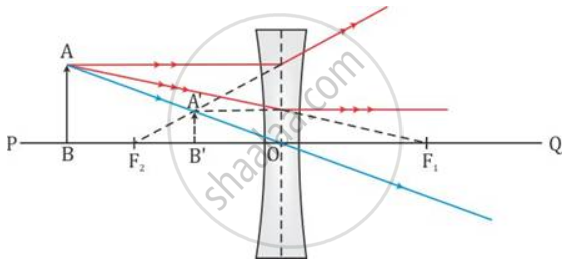Advertisements
Advertisements
प्रश्न
A lens always forms an image between the object and the lens.
A lens always forms an image between the object and the lens.
उत्तर
Ray diagram

APPEARS IN
संबंधित प्रश्न
An object of height 4.0 cm is placed at a distance of 30 cm from the optical centre 'O' of a convex lens of focal length 20 cm. Draw a ray diagram to find the position and size of the image formed. Mark optical centre 'O' and principal focus 'F' on the diagram. Also find the approximate ratio of size of the image to the size of the object.
An object is placed f and 2f of a convex lens. Which of the following statements correctly describes its image?
(a) real, larger than the object
(b) erect, smaller than the object
(c) inverted, same size as object
(d) virtual, larger than the object
The diagrams (a) and (b) in Figure below show the refraction of a monochromatic ray of light through a parallel sided glass block and a prism respectively. In each diagram, label the incident, refracted emergent rays and the angle of deviation.

A lens forms an erect, magnified, and virtual image of an object. Name the type of lens.
State the position of object, position of image, nature of image when: Convex lens is used as in searchlight.
Where should an object be placed in front of a convex lens so as to form an inverted and enlarged image? Will the image be real or virtual? Draw a ray diagram to illustrate your answer.

Write scientific reason.
Adults need bifocal lens spectacle.
Differentiate convex lens and concave lens.
Distinguish between:
Concave lens and Convex Lens
